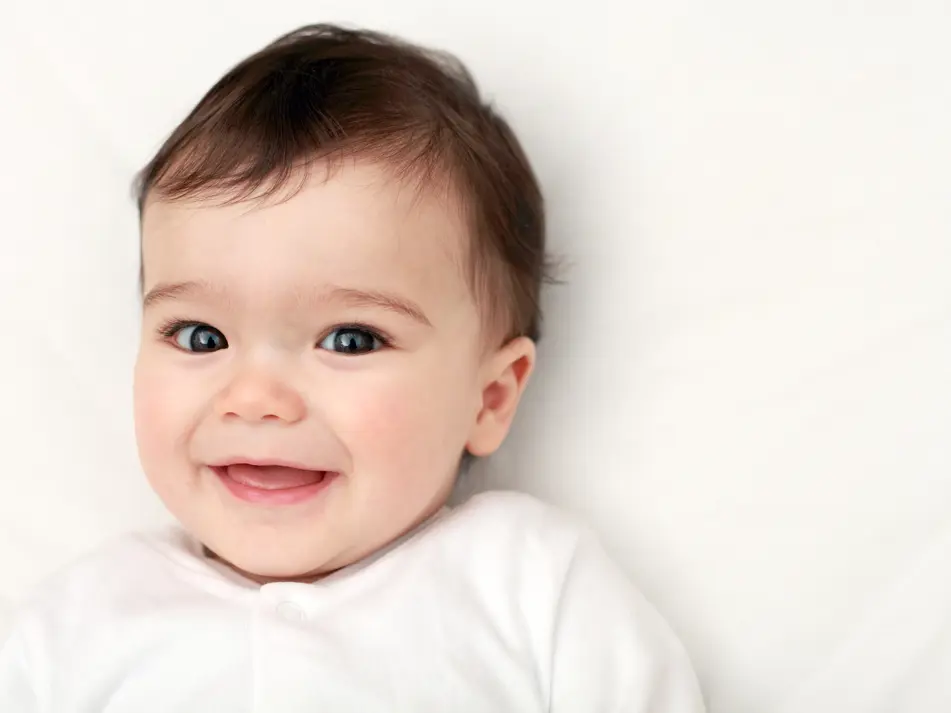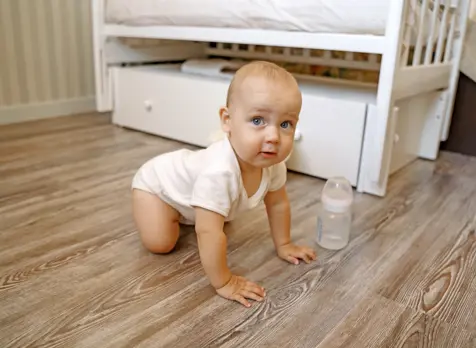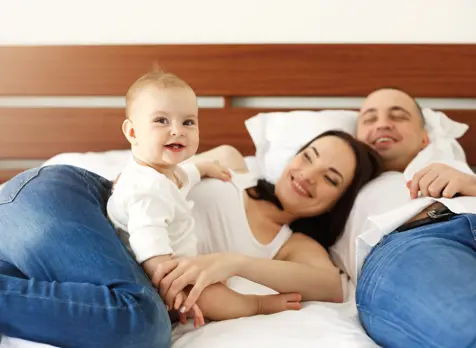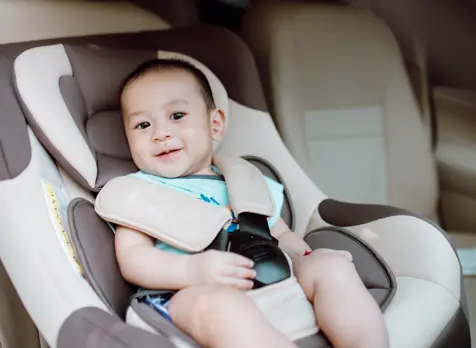First Baby Checklist

When your baby finally arrives, it's a hugely exciting moment. Whether you birth your baby or they come to you much loved and wanted from surrogacy or adoption, you will experience a time of elation and exhaustion.
You will be spending time gazing and cuddling your baby, but also trying to figure out how to feed him and change his nappies and readjust to a total change to your life.
First Baby Checklist
You will be bombarded by advertising about supposedly indispensable items you need to buy for your new baby. It’s tempting to be attracted by the bright and colourful gadgets available, but it’s usually best to stick with the basics until you get to know what you really need.
If you have friends or relatives with new babies, they will be your best guide. Often, friends and family pass on clothes and other useful items. In the meantime, here’s a list of ideas contributed by other mums that might help you.
Clothes
New babies wee, poo and may bring up quite a lot of milk, so they tend to get messy. So your new baby will need quite a few changes of clothes at first.
You don't need to buy these new. Babies grow quickly and you may be able to find great quality second hand baby clothes from markets, online marketplaces and friends.
- Opt for clothes that are easy to get on and off, such as jumpsuits and singlets. These clothes need to be easy to wash and dry.
- You may need some soft cloths, small towels or bibs to catch the milk spills.
- At birth, your baby will probably need size 0000 baby clothes, but if you have a very small baby, you may wish to invest in at least one 00000, just in case. It’s a good idea to start off with some larger sizes to save money, because your baby will grow quickly.
- If your baby is born in winter, you may need two or three cardigans, socks, mittens and two cotton hats without strings or bows to keep their head warm.
Nappies and wipes
Your baby will need about 6–8 nappies a day as new babies can get very messy.
- If you are going to try reusable cloth nappies, you will need about 18–24, depending on how often you wash them. It’s usually best to have a three-day supply in case of rain. Cloth nappies are best soaked and washed every day to second day; the nappies have waterproof outer layers and soft reusable inserts that are laundered. You could consider a cloth nappy washing service while you settle in.
- You will need a supply of baby wipes for cleaning your baby’s skin at nappy changes. Your baby doesn't need baby wipe warmers, special disposable nappy bins or even special disposable nappy bags. There are plenty of ready-made nappy wipes on sale. Or you could use reusable flannel baby wipes. Importantly, the less plastic we use, the better for the environment.
- Buy a nappy rash cream as sometimes your baby can get a red bottom from pooing and weeing so frequently.
- You may like to use a safe change table with a change mat. Alternatively, you can change your baby on a mat on the floor, which is safer.
Wraps, bedding and baths
- Have a supply of some soft, muslin wraps. Your baby will need to be wrapped so he feels safe and cosy.
- You will need fitted sheets for the cot and an infant sleeping bag that meets Australian/NZ Standards and complies with safe sleeping recommendations. A safe infant sleeping bag is made so that the baby cannot slip inside the bag and become completely covered. The sleeping bag should be the correct size for the baby with a fitted neck, armholes or sleeves, and no hood.
- If you’re going to use a blanket, make sure you place your baby with feet at the end of the cot so they won't slip down under the bedding. Tuck the blanket securely underneath the mattress as far as the chest so the blanket won’t slide up and cover your baby's head.
- You should have a safe place to bath your baby, such as a laundry tub or baby bath.
- Some soft towels for bath time.
A safe place for baby to sleep
Cots
The safest place for your baby to sleep is in a new cot that meets Australian/NZ Standards.
If you’re offered a second-hand cot by friends or family, you need to check it for mandatory standards and safety:
- Brakes and locks are working properly
- Paint is in good condition – no chips or cracks
- The cot is stable, secure and all screws are tight
- Nothing sticking out or sharp.
Make sure to follow safe sleep guidelines, when you make up your baby’s cot.
Your baby needs a safe, firm mattress that fits into the cot nice and snugly. You also need to keep his mattress flat. Don’t be tempted to elevate or tilt it on the advice of well-meaning family or friends; researchers have found there’s no value to your baby sleeping like that. Your baby doesn’t need pillows, doonas, cot bumpers, or lambs’ wool or soft toys in his cot – it’s important not to use these because their use is associated with a greater risk for SUDI, including SIDS.
Bassinets and antique cribs
If you’re considering using a bassinet or rocking cradle for your baby, be aware that there are no Australian/NZ Standards for them. You should look for sides that are higher than 30cm to prevent your baby from falling, a snug mattress no more than 7.5cm thick, and a wide stable base that won’t tip over.
Make sure it has good breathability on all sides to reduce the risk of suffocation.
Read more recommendations about what to look for from the ACCC's sleep safe website.
Portable cots should not be used as a permanent bed for your baby. They are only meant for short-term use.
Bottles and Dummies
If you are thinking of using dummies or bottles, you will also need a steriliser such as a microwave steriliser. It's best to buy dummies and bottles new to make sure there isn't any wear and tear, particularly if the baby is teething and potentially chewed on the teat.
Safety standards for dummies
Baby dummies have mandatory Australian/NZ Standards. Safety features and other considerations include:
- Your baby dummy’s shield should have ventilation holes.
- It needs to be strong and mustn’t be able to detach into smaller parts, which could cause your baby to choke.
- There can’t be any strings, ribbons or ties on it, which could wrap around your baby’s neck.
- It can’t have unsafe decorations such as beads, chains, leather straps, twine, brooches or other pretty bling.
- You need to check your baby’s dummy before each use and regularly check for wear and tear. You need to buy new ones regularly.
- Store away from direct sunlight because sunlight causes rubber or silicone to perish.
Child Car Restraints
Your baby’s car restraint or seat is one of your most important purchases on your newborn baby checklist. Possibly, you have already planned to buy a child car seat during pregnancy, especially if you are going to drive home from hospital after having your baby. It’s easiest to buy one ahead of time but there’s a good deal to know first.
There are Australian legal requirements for using child car seats, which are based on your baby’s age. Your newborn baby must use a rear-facing child car seat with an inbuilt harness and continue to use this for the next six months. From six months up to four years, your baby can use a rear- or forward-facing child car seat with an inbuilt five-point harness.
It’s important to follow the guidelines for which type of car seat to use according to your baby’s age, so that your baby is protected in the event of a car crash.
Australian/NZ Standards for car restraints
Your baby’s first car seat needs to be an approved rear-facing capsule with the mandatory Australian/NZ Standards AS/NZS 1754 label on it. This standard applies to all car restraints for children.
When you buy a new child car seat, it will come with all the guidelines you need for how to install, maintain and use the child car seat. It’s important that you use the restraint exactly as shown in the instructions. The safest option for installing the car seat into your car is to get it done by an approved fitting station. You can contact the government roads authority in your region or ChildCarSeats website to find a fitting station.
- All child car seats come with warnings, so you must read them carefully. They include:
- No child should ever be left unattended in the car at any time.
- Use the restraint exactly as shown in the instructions.
- Don’t alter or modify the restraint.
- Have the manufacturer undertake repairs.
- Destroy the restraint if it’s been in a severe car accident, even if no damage is visible.
- Always supervise children in the restraint, so they don’t touch or undo the buckles.
- Don’t allow the restraint to come into contact with polishes, oils, bleach and other chemicals.
- Make sure the seat fits snugly and there's no slack on the straps and they aren't twisted.
Read more at ACCC's Product Safety website.
If you are offered a second-hand car seat to use, ensure it has the mandatory Australian/NZ Standards AS/NZS 1754 label on it, and that it comes with the original instruction booklet. That way, you can make sure it’s installed, repaired and cared for properly.
Also check that the second-hand car seat hasn’t been involved in a serious car crash and that it’s in good condition, with no broken or frayed buckles and straps.
When you reach home, it’s recommended you remove your baby from the car restraints, even if your baby is asleep. It’s not safe for your baby to remain in the seat for extended periods of time.
Prams and Strollers
You definitely need a good-quality pram on your baby checklist, so you can get out and about in the fresh air and sunshine, walk about the shops, and have coffee with family and friends. What do you look for when buying a pram? First, your new baby needs to see your familiar face constantly, feel your gentle touch and hear your soothing voice to help him settle and make him feel safe. The best type of pram is one where you and your baby face each other.
Australian/NZ Standards for prams and strollers
Prams and strollers must meet mandatory Australian/NZ Standards AS/NZS 2088:2000. There are certain things to look for when you’re buying a pram or stroller:
- It must have a five-point restraint harness that goes around your baby’s waist and between his legs, with a warning label that says ‘Use at all times’.
- It must have one or more brakes, with red parking brake levers. You should always put the brakes on when you stop – even on a flat surface.
- It must have a tether strap to stop the pram or stroller from rolling away.
- It should have easy steering, a strong frame, solid durable wheels and footrest (stroller).
- Frame locks must be secure to stop the pram from folding during use and a secure lock on reclining backs.
- Its carry basket shouldn’t tip or rock the pram, and one that is preferably in a central spot underneath the pram. Prams can fall over when you hang things on the handles and your baby may fall out.
Before using your pram, read and follow the instructions. Always park the pram parallel to traffic/pedestrian crossings, and on train stations and other hazards, so the pram and your baby can’t roll into danger. Don’t ever leave your baby unattended in a pram, even when he’s asleep. A pram is not a substitute for a cot. He can become trapped among the straps and other pram parts, or the pram may tip if he moves and wriggles. Read more at ACCC's Product Safety website.
Bouncinettes and Rocker Chairs
Bouncinettes and rocker chairs are popular for little babies. They’re useful for those few moments when you just want to pop your baby down safely, while you have a cup of coffee or tea, and collapse on a chair while supervising your baby. Bouncinettes are also great for sitting on the floor and having delightful social times with your baby. You get great face-to-face contact with each other, your baby is well supported and you have both hands free to play different games.
Safety tips for bouncinettes and rockers
There are no mandatory safety standards for bouncinettes or rocker chairs. The most important thing is to use them on the floor only. Never place them on a table or other raised surface, which could cause your baby to fall. Other considerations include:
- Solid base should be wider and longer than the area in which your baby lies.
- Rubber tips on the base should stop the bouncinette/rocker chair from moving when the baby rocks.
- Bouncinette should have a waist and crotch strap.
- Rocker chair has a five-point harness – you should always place your baby in the harness.
- Your baby shouldn’t sleep in the bouncinette or rocker. It isn’t safe because his head and chin may tilt onto his chest, restricting his breathing.
- Once your baby starts to roll, stop using the bouncinette and rocker chair.
- Only use under your supervision.
Read more on the ACCC Product Safety website.
Baby exercise jumpers or ‘jolly jumpers’
Baby exercise jumpers are not recommended for young babies because they lack head and neck control and are not good for their developing spine and legs.
Baby Monitors
Baby monitors are popular devices for babies. The most common kind of monitors are video or sound and simply alert you that your baby is awake from a sleep, and is crying or moving about. This might be helpful if you are in another area of the house or in the backyard and can't hear your baby crying.
Then there are more specialised breathing and apnoea monitors. Baby breathing monitors have an alarm that goes off if your baby stops breathing. The trouble with these monitors is that they can go off when your baby is breathing normally.
When your baby is asleep, he doesn't breathe in the same regular pattern as you do. His breathing can be irregular, especially in active sleep, so he may have some normal brief pauses that cause the alarm to go off. This can be stressful for you and may cause you unnecessary anxiety.
If you are anxious or worried about your baby, however, do talk to your doctor or nurse about how you are feeling.
Breathing monitors are useful when they are recommended by and used under the supervision of your doctor or nurse. They are usually for infants with specific medical conditions.
What you will need for yourself
You also need to take care of yourself after you have the baby. Here are some things you might want to consider:
- If you’re breastfeeding, you’ll need a nursing bra and plenty of breast pads.
- You probably won’t need a breastfeeding pillow or special breastfeeding chair. It might be an idea to wait and see if you need those before spending the money.
- You will need lots of sanitary pads for the hospital and after you get home. Maternity pads are recommended because there is quite a heavy flow in the first days after your baby is born.
- Once you’ve had your baby, make sure you stock up on groceries, fresh fruit and vegetables, and easy-to-cook food you like.
Getting ready to bring your baby home does take a bit of preparation, but hopefully breaking it down into these lists helps you to figure out what it is you want.






































